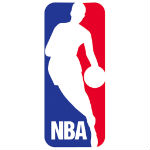 The NBA has become the latest professional sports league to adopt the institution of having all reviews on replays done from a central control command rather than having the plays reviewed right there at courtside.
The NBA has become the latest professional sports league to adopt the institution of having all reviews on replays done from a central control command rather than having the plays reviewed right there at courtside.
The idea behind the move is obvious. Number one, it saves a bunch of money. Instead of having a replay review set up at each venue, now the entire operation will be centralized and under the control of one review team.
The world today is so interconnected via the internet that virtual meetings are taking place around the world while the participating parties are spread out all over the world. Hook everyone up, turn it on and start your meeting. Everyone can see and hear everyone else just like they were in the same room together.
So why not expand that idea to reviewing questionable calls on the basketball court from a central location by a team of specialists trained to make the tough calls? The idea is to streamline the process and cut down on the time that it takes to resolve the controversial calls that need to be reviewed.
The idea is not new. The National Hockey League has a central command center in Toronto that reviews plays and communicates their findings to the on-court officials.
Rob Thorn, the president of basketball operations for the NBA told the press, “What we’re in the process of doing is we’re going to create a central location where we’ll have people there who will be watching every game. When the referees go over to the side, in many instances the central replay center will already know what happened and they’ll be able to tell the referee, which will hopefully take less time.”
The move is just one of the first undertaken by incoming NBA Commissioner Adam Silver who has just replaced David Stern after 30 years in the office. Look for some more changes coming from Mr. Silver.
The review structure in the NBA has changed in the past few years by adding more and more ‘triggers’ which led to more reviews and slower basketball games. The latest move by the commissioner’s office is obviously aimed at addressing that issue by making the entire review process quicker and more efficient.
Mr. Thorn concluded, “It’s still a work in progress for exactly how it’s going to work. On the line calls, like whether it’s a 3-pointer or a 2-pointer, or in many occasions they’ll be able to tell the referee the ball was definitely out of bounds. That should help.”




